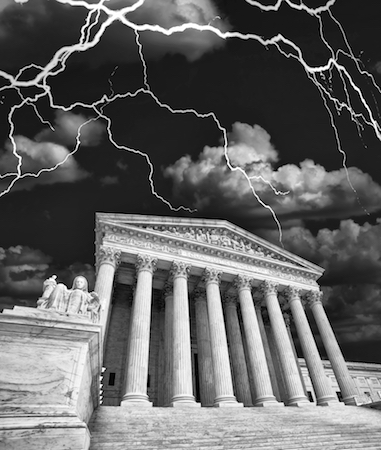USPTO Issues Reminder to Examiners on Means-Plus-Function Analyses
“The memo asks examiners to use form paragraphs to support the Office’s goal of establishing a clear prosecution record by creating a claim interpretation section in an Office action ‘in which examiners can set forth any presumptions and clarifying remarks.’” – USPTO memo
The U.S. Patent and Trademark Office (USPTO) on Tuesday, March 19, issued a memo for all patent examiners reiterating its current practices and resources for examining means-plus-function and step-plus-function claim limitations. The memo is primarily focused on reminding examiners that they must create a clear record explaining their interpretation of such claims and points to various resources and training tools that are available to assist them.
35 U.S.C. Section 112(f) reads:
(f) Element in Claim for a Combination.—
An element in a claim for a combination may be expressed as a means or step for performing a specified function without the recital of structure, material, or acts in support thereof, and such claim shall be construed to cover the corresponding structure, material, or acts described in the specification and equivalents thereof.
The USPTO’s Manual of Patent Examining Procedure (MPEP) 2181(I) cites a three-step analysis for determining whether or not a claim is “means plus function”:
- The claim limitation must use the term “mean”, “step” or an equivalent term (g.,a generic placeholder for such term);
- The term from (1) is modified with functional language, typically linked to transitional language, such as “for” or “such that”; and
- The term from (1) is notmodified by sufficient structure, material or acts for performing the claimed function.
The memo urges examiners to follow this three-step process and to be aware of the presumptions they create as well as how and when those presumptions are overcome. “…[A] limitation that recites function without reciting sufficient structure, material, or acts (for purposes of simplicity, here and below referred to as “structure”) for performing that function is to be interpreted under § 112(f),” says the memo. Part of the need for following the formula and referring to available resources is that “there are no absolutes or approved lists of terms used as a substitute for ‘means’ that serve as generic placeholders,” explains the memo. “The examiner must carefully consider the term in light of the specification and the commonly accepted meaning in the technological art.”
MPEP section 2181 includes examples of terms that have been found not to be generic placeholders and terms that have been. Some common generic placeholders include: “mechanism for,” “module for,” “device for,” “unit for,” “component for,” “element for,” “member for,” “apparatus for,” “machine for,” and “system for.” The memo asks examiners to use form paragraphs to support the Office’s goal of establishing a clear prosecution record by creating a claim interpretation section in an Office action “in which examiners can set forth any presumptions and clarifying remarks.” This will help to inform the public, the applicant and the courts of the claim construction used by the examiner during prosecution as well as “how the examiner searched and applied prior art based on the examiner’s interpretation of the claim,” says the memo.
Section C of the memo deals with evaluating the adequacy of the supporting disclosure once a claim limitation has been interpreted to invoke Section 112(f). It stresses that a finding of indefiniteness/ ambiguous claims after using the three-step test should be rare and that in cases where the result is ambiguous the examiner must clearly state their interpretation on the record. It further emphasizes special considerations for computer-implemented claim limitations and evaluating whether indefinite means-plus-function claims under Section 112(b) meet the enablement criteria for Section 112(a).
A press release on the memo said that “[c]learer USPTO communications provide both the applicant and the public with notice as to the claim interpretation used by the patent examiner during prosecution, and if the applicant intends a different claim interpretation, the issue can be clarified early in prosecution.”
In a statement, USPTO Director Kathi Vidal said the guidance is part of the Office’s “continued work to create more robust and reliable intellectual property rights on which patent applicants, investors, and the public can rely and use to build a stronger economy.” She also said it builds on the Office’s Section 101 and Section 103 guidance “to ensure the USPTO is using consistent interpretations of the law across the agency.”
Image Source: Deposit Photos
Author: 3d_generator
Image ID: 661772972
Eileen McDermott
Eileen McDermott is the Editor-in-Chief of IPWatchdog.com. Eileen is a veteran IP and legal journalist, and no stranger to the intellectual property world, having held editorial and managerial positions at […see more]







